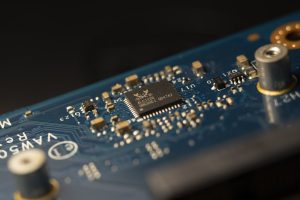Micro-Grid Ready: Homes Prepared for Energy Independence
Picture this: a future where homes are self-sustaining, producing and storing their own energy. A reality where power outages and blackouts are a thing of the past. It may sound like a distant dream, but with the increasing popularity of micro-grids, this future could be closer than we think. Micro-grid ready homes are paving the way for a future of energy independence, and it’s time we take a closer look at what it means to be “micro-grid ready”.
What is a Micro-Grid?
Before we dive into the specifics of micro-grid ready homes, let’s first understand what a micro-grid actually is. Simply put, a micro-grid is a small-scale version of a traditional power grid, usually serving a specific geographic area or a single building. It consists of local energy generation, such as solar panels or wind turbines, and energy storage, such as batteries. The key difference between micro-grids and traditional grids is that micro-grids are designed to operate independently from the larger grid, providing on-site energy supply and reducing the reliance on centralized energy sources.
The Benefits of Micro-Grid Ready Homes
Micro-grid ready homes are homes that are equipped to operate within a micro-grid. This means that they are equipped with their own local energy generation and storage systems, allowing them to continue functioning even during power outages. There are several advantages to being micro-grid ready:
- Energy Independence: With a micro-grid ready home, you are no longer at the mercy of the central power grid. You can generate and store your own energy, reducing your reliance on external sources.
- Lower Energy Costs: By producing and storing your own energy, you are not only reducing your dependence on the central grid, but also on your energy bills. With a micro-grid, you can potentially sell excess energy back to the grid, further decreasing your energy costs.
- Increased Resilience: Traditional grids are susceptible to power outages and blackouts, leaving homes without electricity for extended periods. With a micro-grid ready home, you are better equipped to handle these situations and continue to function as normal.
Features of a Micro-Grid Ready Home
So, what exactly does it take to make a home micro-grid ready? Here are some key features:
Renewable Energy Generation
The cornerstone of a micro-grid ready home is its ability to generate its own energy. This is typically done through the use of renewable energy sources such as solar panels or wind turbines. These sources are environmentally friendly and sustainable, making them an ideal choice for micro-grids.
Energy Storage System
In order to have a reliable supply of energy, a micro-grid ready home must have an energy storage system. This can come in the form of batteries, which store excess energy generated during peak times for later use. By having a storage system, micro-grid ready homes can continue to function even when the sun is not shining or the wind is not blowing.
Smart Energy Management System
The key to a successful micro-grid is efficient energy management. This is where a smart energy management system comes in. This system monitors energy production, storage, and usage, and adjusts accordingly to ensure a reliable supply of energy. It can also prioritize the use of renewable energy sources over traditional sources, further reducing dependence on the grid.
The Future of Energy Independence
In recent years, the demand for micro-grid ready homes has been steadily increasing, and for good reason. With the threat of climate change looming and the need for sustainable energy solutions, micro-grids offer a promising solution for a more resilient and energy-independent future. As technology continues to advance and the costs of renewable energy sources decrease, we can expect to see more and more homes becoming micro-grid ready.
Micro-grid ready homes are not just a trend, but a necessity for a sustainable future. They offer numerous benefits to homeowners and the environment, and their potential to revolutionize our energy systems cannot be ignored. Are you ready to be a part of this energy revolution?





